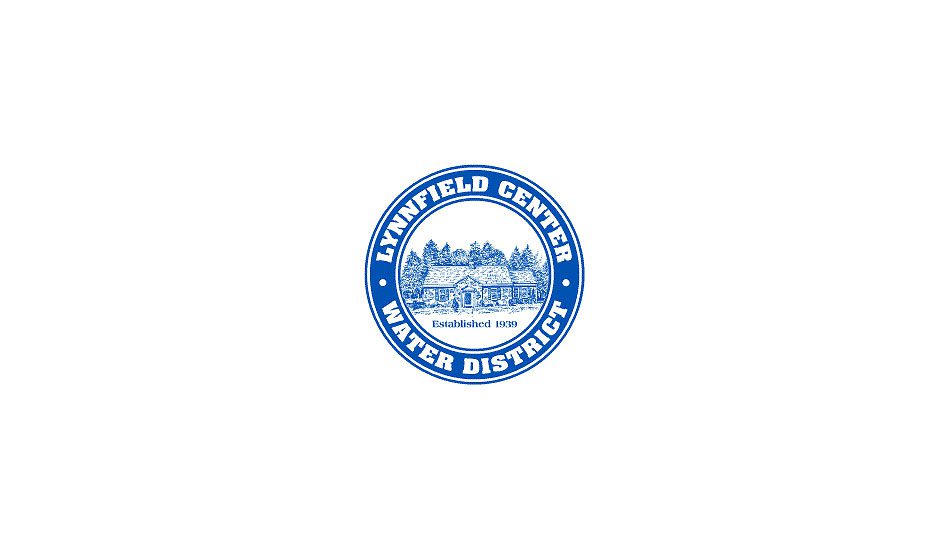By DAN TOMASELLO
LYNNFIELD — The Lynnfield Center Water District is developing an action plan in order to address potentially-harmful PFAS6 that has been detected in water samples, Superintendent John Scenna said during a Dec. 16 meeting.
Scenna said the Massachusetts Department of Environmental Protection (MassDEP) implemented new drinking water regulations in October that regulate the maximum contaminant level (MCL) for the sum of six per- and polyfluoroalkyl substances called PFAS6. He said PFAS6 includes perfluorooctanoic acid (PFOA), perfluorooctane sulfonic acid (PFOS), perfluorononanoic acid (PFNA), perfluorohexanesulfonic acid (PFHxS), perfluorodecanoic acid (PFDA) and perfluoroheptanoic acid (PFHpA).
“The LCWD has confirmed elevated levels of PFAS6 in the drinking water during routine monitoring,” said Scenna. “It is important to note that LCWD has not had a PFAS6 MCL exceedance at this time.”
CDM Smith Water Discipline Leader Alan LeBlanc said PFAS6 does not “break down easily and biodegrade naturally.”
“They stay in the environment for a long time,” said LeBlanc. “PFAS are not a new substance. They have been manufactured since the 1950s. They are in the soil, water and food around us. They have been linked to environmental and human health effects.”
CDM Smith Project Manager Anne Malenfant said MassDEP’s new drinking water standard mandates that the minimum PFAS6 level be 20 parts per trillion (PPT).
“One part per trillion is equivalent to a single drop of water in 20 Olympic-sized swimming pools,” said Malenfant. “In the past, it was parts per billion, which is still a very small amount. What this means is that PFAS that couldn’t be detected at parts per billion can now be detected at parts per trillion.”
Scenna said the initial samples collected revealed that Station 1 at the Phillips Road Tubular Well Field detected a PFAS6 level of 30.5 PPT, which was higher than MassDEP’s limit of 20 PPT. As a result, Scenna said the district took Station 1 off line in September.
Additionally, Scenna said samples taken from Station 2, which is at the Main Street well field, detected PFAS6 levels totaling 24.3 PPT.
Malenfant said the samples collected earlier this fall revealed that Station 3 at the Phillips Road well field and Station 4 at Glen Drive both had PFAS6 levels that were below 20 PPT.
“Those stations provide 80 percent of the water for the district,” said Malenfant. “Stations 1 and 2 represent 25 percent of the district’s production.”
Scenna concurred with Malenfant’s viewpoint.
“We have increased production of our water sources with PFAS6 levels below the MCL and reduced the production of Station 2,” said Scenna. “Blending of these sources in the distribution system minimizes overall PFAS6 levels delivered to customers.”
While MassDEP’s new PFAS regulations went into effect in October, Malenfant said the LCWD’s staff began preparing for the new regulation in September. The district also hired a state-regulated laboratory in order to test water samples.
“Initial samples were taken in September and confirmatory samples were taken in October,” said Malenfant. “The average of those were used to determine the different monitoring intervals at the different sources. The actual calculation will be based on the fourth quarter’s results. The first calculation will be done after receiving the December results.”
Malenfant said Massachusetts has developed the strictest PFAS regulations in the U.S. in order to protect sensitive groups of people. She said women who are nursing or pregnant, infants and people with compromised immune systems are advised not to consume, drink or cook with water when the level of PFAS6 exceeds 20 PPT.
“Consumers not in those sensitive subgroups can continue to consume the water,” said Malenfant. “PFAS primarily gets into the body through ingestion and is not absorbed through the skin. Brushing teeth, bathing, showering and washing dishes are safe. Boiling water will not destroy PFAS and it can actually increase the concentration level.”
The health risks associated with PFAS6 include high cholesterol, changes in liver enzymes, small decreases in birth weights, decreased vaccine response in children, high blood pressure and increases the risk of kidney and testicular cancer.
“Studies have found links to high levels of PFAS exposure to negative health effects,” said Malenfant.
Malenfant said the LCWD is looking at short-term and long-term solutions in order to address the PFAS6 problem. She said the district is frequently taking samples from Station 2 and might close it down permanently. She also said the district is exploring getting more water from the MWRA via Wakefield as part of the supplemental water project that LCWD ratepayers approved at the Annual Meeting last May. She said the LCWD is exploring possibly building additional wells at Stations 3 and 4.
LeBlanc said the district is looking into conveying Station 2’s water to Glen Drive. He recalled that ratepayers at the Annual Meeting also approved building a greensand filter water treatment plant at the Glen Drive station in order to treat iron and manganese, which has caused the discolored water issues impacting residents living near the North Reading line.
“Those improvements include pumping water at Station 2 and piping it Station 4,” said LeBlanc about the potential PFAS6 solution at the Glen Drive station. “We have also contemplated having Glen Drive receive water from Station 2. We would have to add on PFAS treatments to the iron and manganese removal system. It is an additional unit process that would specifically remove PFAS after iron and manganese is removed. The water would then progress through the distribution system. This work could cost between $6 million and $8 million.”
Malenfant also said the LCWD is investigating the possibility of starting a program that will provide an alternative water supply for sensitive groups of ratepayers.
Scenna said the LCWD will be keeping ratepayers informed about the district’s next steps.
“This is a small elevated level of PFAS and it doesn’t appear to be from a particular source,” said Scenna. “There are water systems that have PFAS levels that are 10 or 20 times our levels. PFAS has existed in so many things for a number of years and it has now gotten into the groundwater. While it’s alarming, people should know that 80 percent of our water is okay.”
LCWD Water Commissioners Chairman Joe Maney echoed Scenna’s viewpoint.
“PFAS has hijacked everything,” said Maney. “It’s certainly a game changer and it’s going to affect everything we do going forward. We are hitting the ground running to address this.”
Q&A
After LCWD and CDM Smith officials gave an overview of the PFAS issue, they answered questions from ratepayers.
Patrice Lane resident Patricia Campbell inquired what are Wakefield’s PFAS levels.
Malenfant recalled that Wakefield gets water from the MWRA and Crystal Lake. While she did not have Wakefield’s PFAS data available, Malenfant said she will get that information.
“The MWRA has been testing for PFAS at non-detect levels,” said Malenfant. “Most of the water coming from Wakefield will be water from the MWRA.”
Main Street resident Tom Manning asked if LCWD officials suspect Bostik has contributed to the PFAS6 issue. Bostik’s plant in Middleton manufactures adhesives for several different industries.
“We haven’t looked at sources,” said Scenna.
In response to a question from Manning, Chairman Maney said he expects the district will violate MassDEP’s 20 PPT regulation next month.
“When we test at the end of December, we will trigger a violation,” said Maney. “That is why we have been meeting daily to come up with a temporary solution instead of waiting two or three weeks when we have a violation.”
Baldwin Lane resident Chris Cole asked if the district could abandon its current capital improvement project program and join the MWRA instead.
“We looked into it,” said Scenna. “We would have to either connect to the MWRA by Greenwood Station in Wakefield or we would have to install pipe from Lynnfield Centre to Walnut Street to Route 1. It would be a very expensive infrastructure project. That is why we decided to continue using our own sources in order to maximize our infrastructure. If the MWRA came further up Route 1, we would have had a clearer path.”
Lowell Street resident Erin Denehy inquired if the district will be identifying the breakdown of the PFAS6.
Scenna said the LCWD will be posting the individual results of the six chemicals included in PFAS6. Malenfant also noted that MassDEP decided to regulate all six chemicals because “it was the best way to address the overall health risks.”
Scenna said the LCWD will be providing an update on the district’s next steps for addressing the PFAS6 problem in January.
“We are working as fast as we can,” said Scenna.





